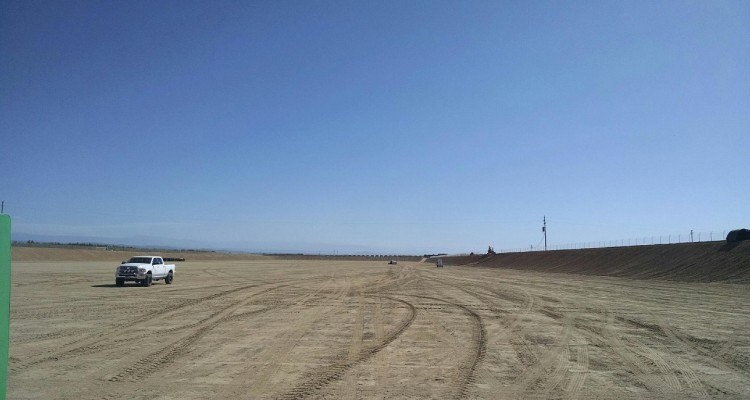SOURCE: Press Advantage http://www.pressadvantage.com/story/1098-californi... Farmers across California are wondering how much they are able to produce using just an acre-foot of water. One farmer decided to invest in a 40 acre irrigation reservoir, having calculated that this would enable his farm to survive the prolonged drought that the state is currently experiencing. The reservoir has been purchased through BTL Liners, a company that has years of experience in creating various pond liners, including those for agricultural applications. "I installed the liner in October, and it seems I timed it just right," says Paul Brennan, the Californian farmer. "We had a brief stormy period during the winter, and my irrigation reservoir was able to capture and store lots of rainwater." Investing in the reservoir was just the first step, however. He also looked into improving his existing irrigation techniques. Additionally, he has been very active in implementing various other conservation methods. Thanks to these, the long term outlook for his farm has been tremendously improved. BTL took note and wondered whether this one farmer could be used as an example for other farmers. "BTL is conducting a comprehensive cost analysis to determine when this investment will pay for itself in its entirety," says Michael Baron, President of BTL Liners. "Preliminary indications show a significant cost-savings that will more than justify the client's investment. Those farmers who make wise investments in water management infrastructure are positioning themselves not only to survive the current drought with the least damage, but to improve their resilience for future periods of drought or even flooding." Indeed, the Californian drought means that, for a second year in a row, many farmers will be unable to receive water from the Central Valley Project. This project allocates water from the state's reservoirs. Of the nine million irrigated farmland acres, one third—three million acres—will not be able to receive surface water at all this year. Indeed, the only water they will be able to access is rain water, unless the farmers are able to purchase water allotments from other farmers. This is why so many farmers are now looking into drilling new wells and improving irrigation techniques. Unfortunately, these methods of gaining more water are incredibly expensive. Digging a well is costly and bringing the water up from underground incurs further costs. Furthermore, the quality of the water often suffers, particularly when the underground aquifers are depleted. This means salt and other dissolved mineral concentrations rise. Surface lagoons and reservoirs, by contrast, have benefits both in terms of flood management and water supply. This is achieved by capturing water when it is available and then storing it so it can be used when needed. "We are in an unprecedented, very serious situation," Governor Brown warned in January, "At some point, we have to learn to live with nature, we have to get on nature's side and not abuse the resources that we have." For further information on how BTL Liners can help you build irrigation reservoirs with reinforced polyethylene liners, please use the contact details below, or telephone an expert on 541-447-0712.
Press Release: California Farmer Invests In 40 Acre Irrigation Reservoir
AquaArmor Pond Liner
The most versatile liner on the market today, AquaArmor maximizes protection from harmful UV rays, tear resistance and punctures that cause leaks. Simply the best liner on the market.Newest Articles:
Subscribe to Updates
Article Topics
Agriculture
Covers
Tarps
Aquaponics
Energy
Liners
Hydroponics
Greenhouse Light Deprivation
Water Gardens
Farm Ponds
Greenhouses
Greenhouse Gardening
Greenhouse Cover
Fish Pond
Pond
Fish
Golf Course Pond
Golf Course Water Feature
Natural Pond
Landfill Cover
Irrigation
Irrigation Pond
Irrigation Canal
Hydraulic Fracturing
Oil Containment
Secondary Containment
Fracking
Oil Liner
Fuel Liner
Frac Pit
Fire Protection Pond
Fire Suppression Pond
Fire Pond
Geomembrane
Canal Liner
Brine Pond
Koi Pond
Algae Pond
Nursery Pond
Retention Pond
Man-Made Lake
Lakes
Geothermal Greenhouse
Commercial Greenhouse
Preformed Pond Liner
Groundwater Storage Lagoon
Mining Pond
Mining Lagoon
Evaporation Pond
Salt Pond
Pond Liner Materials
Catch Basin
Stormwater Management
Barren Pond
Processing Pond
Natural Swimming Pond
Drainage Systems
Ditch Lining
Aquaculture
Sewage Lagoon
Mining Geomembranes
Floating Cover
Wastewater Containment
Geosynthetics
Cistern Lining
Erosion Control
Fertilizer Containment
Winery Water
Silage Cover
Winery Irrigation Pond
Baseball Field Cover
Tailings Pond
Produced Water Liner
Produced Water Winery
Construction Pond
Winter Ponds
Fish Hatchery
Algae Raceways
Coal Ash Containment
Fishing Lakes
Oilfield Pits
Aquatic Habitats
Lake Restoration
Landfill Cell Liners and Cap Covers
Leachate Pond
Rain Cover
Heap Leach Pads
Residential Ponds
Gas Collection
California Drought
California Pond Liner
Overburden Containment
Pond Liner
Fish Stocking Pond
Mine Reclamation
Wastewater Cover
Drought
Irrigation Reservoir
Sludge Management
Cable Parks
Baffle Systems
Alternative Daily Covers
Reservoir Pond
Aeroponics
Food Shortages
Homesteading
Prepping
Toxic Waste
Potable Water Storage
Green Roof
Clearwells
Stormwater Harvesting
Snow Making Ponds
Pond Plants
Hunting Ponds
Oregon Pond Liner
Lavender
Site Runoff Containment
EPDM Liners
Duck Hunting Pond
Deer Hunting Pond
Decorative Ponds
Methane Capture
Large Pond
Sports Field Liner
California Fire Pond
Helicopter Dip Pond
Oregon Fire Pond
Pond Skimming
Geotextile Fabric
Silt Fences
Backyard Greenhouses
DIY Greenhouse
RPE Liners
Desalination



